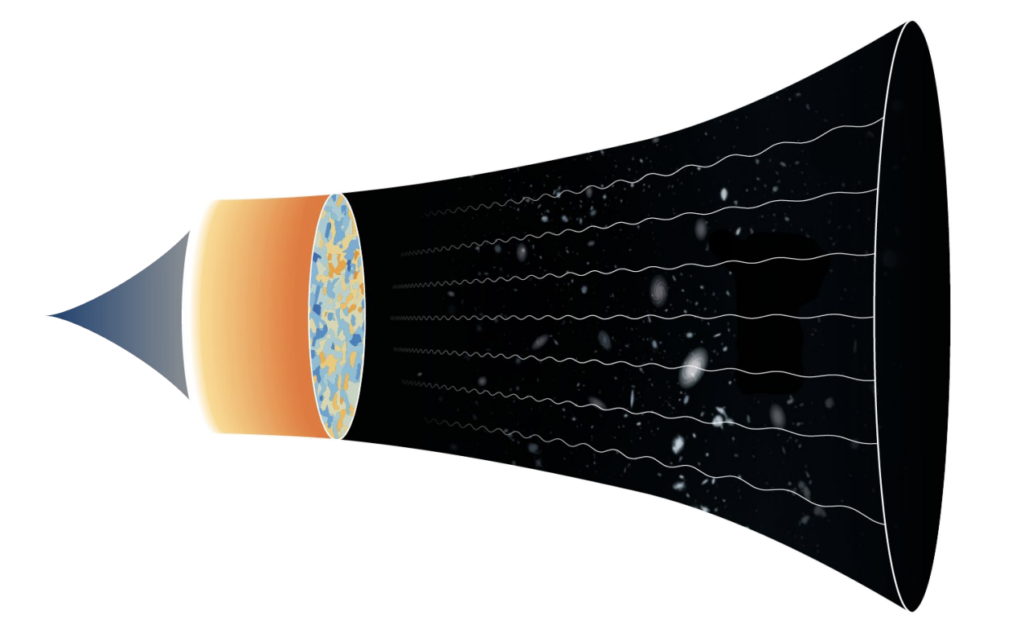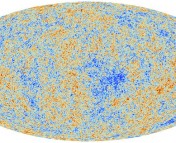“It is not an exaggeration to say that modern cosmology consists largely of a series of footnotes to Peebles.” —Sean Carroll
As mentioned in yesterday’s Astrobites post, half of the 2019 Nobel Prize in Physics was awarded to Michel Mayor and Didier Queloz “for the discovery of an exoplanet orbiting a solar-type star.” Today’s Astrobite will talk about the other half of the Nobel, awarded to James (Jim) Peebles “for theoretical discoveries in physical cosmology.”
Peebles is currently the Albert Einstein Professor of Science, Emeritus, at Princeton University, where he earned his Ph.D. in physics in 1962. Afterwards, he remained at Princeton as an instructor and a researcher, and then a professor, for his entire career. As one of the founders of modern cosmology, Peebles laid the theoretical groundwork of physical cosmology—starting in 1964, and developed over two decades—and contributed significantly to our understanding of the history of our Universe, all the way back to the Big Bang. When asked what he would view as his greatest insight in cosmology, Peebles eventually responded, “It’s a life’s work.” Given the breadth of Peebles’s contributions, it will be impossible to go in-depth into all the papers that have contributed to his Nobel recognition in one post, so today we will touch upon some of his most important work. Note: All papers linked here are open access!
The Cosmic Microwave Background

The accidental discovery of the Cosmic Microwave Background (CMB) by 1978 Nobel Laureates Arno Penzias and Robert Wilson is one of the most serendipitous events to happen in modern physics. However, its significance for science wasn’t made clear until they talked with researchers at Princeton, including Peebles, who were at the time designing instruments to try and detect the CMB. The resulting landmark publication (Dicke, Peebles, Roll, and Wilkinson 1965) helped jumpstart the field of observational cosmology. Although the CMB was predicted a few years earlier, this paper also discussed constraints on ‘ordinary’ (baryonic) matter present in the Universe from the CMB, including how observations of galaxies suggested an average density of matter many times greater than what their calculations suggested. This contradiction suggested the need for large amounts of unknown matter to make up the difference.
Later that same year, Peebles published a paper (Peebles 1965) discussing how the CMB would have affected galaxy formation. He argued that the radiation would have initially prevented variations in density in the early Universe from growing large enough to form gravitationally bound systems, such as stars and galaxies. However, after the Universe sufficiently expanded to some critical size, Jeans instability would take over and gas clouds would finally form, then becoming stars and galaxies, free to evolve unaffected by the CMB. This paper was one of the first to apply the laws of physics to the Universe as a whole. A couple of years later, Peebles also looked at structure formation (Peebles and Dicke 1968) for globular star clusters, predicting (with caveats) that they may have preceded the formation of galaxies.
Nuclei in the Early Universe
In 1966, Peebles developed pioneering predictions relating to “Big Bang nucleosynthesis” (BBN), the formation of light elements (heavier than hydrogen) during the early Universe. Immediately after the Big Bang, in a hot dense soup of nuclei, light elements such as deuterium and helium would have formed. As the temperature of the CMB cooled below some critical temperature, helium emerged as the dominant element. The density of matter in the Universe as the CMB cooled to that critical temperature would be directly proportional to the amount of helium present in the early Universe, i.e. the “primordial helium abundance.” Peebles calculated that if the present-day CMB temperature is 3K, then helium would have made up 27-30% of the early Universe by mass (Peebles 1966a), later revising his numbers in a more detailed calculation to 26-28% (Peebles 1966b). His predictions have held up amazingly well: today’s precision cosmology experiments measure the primordial helium abundance to be about 25%.
In 1968, Peebles worked through the details of a process called recombination in the early Universe (Peebles 1968). During this process, light elements produced a few hundred thousand years earlier, during BBN, combined with electrons to form neutral atoms. Peebles approached this process with an intuitive “three-level atom” approximation—one level each for keeping track of hydrogen in its ground state, its first excited state, and its ionized state—which accounts for the most important physical processes and holds up well (within ~10% error) even after modern revisions.
Exploring “Inflation” before Inflation
Peebles also helped lead the predictions for the amount of fluctuations imprinted on the CMB temperature across the sky on small scales (Peebles and Yu 1970). The imprints would have been due to sound waves from initial variations in early Universe plasma density. Peebles and Yu initially predicted variations of at least 15 parts in 100,000; measurements made by COBE decades later have observed variations on the order of 1 part in 100,000 (deviations of ~30μK from the 3K CMB temperature). To make their predictions, they argued that the initial power spectrum of the Universe that made the sound waves was “scale-invariant.” A power spectrum tells you on what size scales important structures can form, but a scale-invariant power spectrum has no characteristic scale. In other words, in the early Universe, structure looks the same on all size scales. Over a decade later, the theory of inflation was proposed which, among other things, predicted an approximately scale-invariant power spectrum.
Dark Matter and Dark Energy

Peebles also made immense contributions to the field of dark matter. He helped make numerical calculations describing the formation of “barlike” galaxies, and also observed that a large unseen quantity of matter—dark matter—in the galactic halo must be present in order for our Milky Way to be a stable system (Ostriker and Peebles 1973). A year later, he helped make the case that our Universe must have large quantities of unseen matter as well (Ostriker, Peebles, and Yahil 1974). These papers helped provide the theoretical framework for dark matter, something astronomers—most notably Vera Rubin—had already seen observational evidence for a few years prior.
Then, in 1982, Peebles published a theory of cold dark matter (Peebles 1982). He mentioned that the level of then-unobserved variations in the CMB temperature must be smaller than 1 part in 10,000, and this fact combined with “the usual cosmology with baryons, electrons, radiation, and massless neutrinos” was incompatible with the Universe presently observed. (In this paper, he also predicted a CMB temperature variation of 5 parts in 100,000—closer to the measured COBE value.) As such, he proposed the existence of non-relativistic, massive, and weakly interacting particles (sound familiar?) that dominated the matter makeup of the Universe. Importantly, he considered the effect of this matter on structure formation in the Universe, finding predictions for the formation of galaxies and galaxy clusters reasonably consistent with what was observed.
A couple of years later, Peebles reintroduced the cosmological constant into theoretical cosmology, first in the context of cold dark matter and structure formation (Peebles 1984a) and then in the context of constraining cosmological models (Peebles 1984b). He proposed that the cosmological constant might balance the conflict between the measured matter density of the Universe, and the constraints that the Universe is “flat” on large scales. The cosmological constant represents an intrinsic energy of space itself, and is the simplest explanation for dark energy, our name for the unknown mechanism through which the Universe is expanding at an accelerating rate. Together with his earlier work, Peebles put together the key components of the standard model of cosmology: cold dark matter and dark energy.
In conclusion…
Peebles was one of the first scientists to apply the laws of physics to the study of our Universe as a physical system that evolves over time. His methods and calculations helped pave the way for cosmology to turn from a speculative field into a quantitatively precise science, testable with observations. In fact, a common recurring theme is that most of Peebles’s insights into cosmology preceded the observational data that, when acquired, more or less confirmed his insights. The interplay between theory and observations for physical cosmology has been stunningly beautiful, and has forever changed how we view the Universe—views that are still changing with today’s precision cosmology experiments and tomorrow’s new and exciting discoveries!





Excellent article! Very good synopsis
Hello, I cannot understand why scientist talk about soud waves in the early universe.
Does that mean sound in a commonly sense?
Charlyms
Hi Klaus! Typically when astrophysicists talk about sound waves like this they usually mean pressure waves. This means a wave that is propagated as material is compressed (pressure increased), and then ‘resets’ to the original state by increased pressure pushing it apart again (pressure decreased). This is the same way that sound waves move through the Earth’s atmosphere! Because of this we often colloquially refer to them as `sound waves` or `acoustic waves`, because the mechanism is the same. See more: https://www.merriam-webster.com/dictionary/pressure%20wave